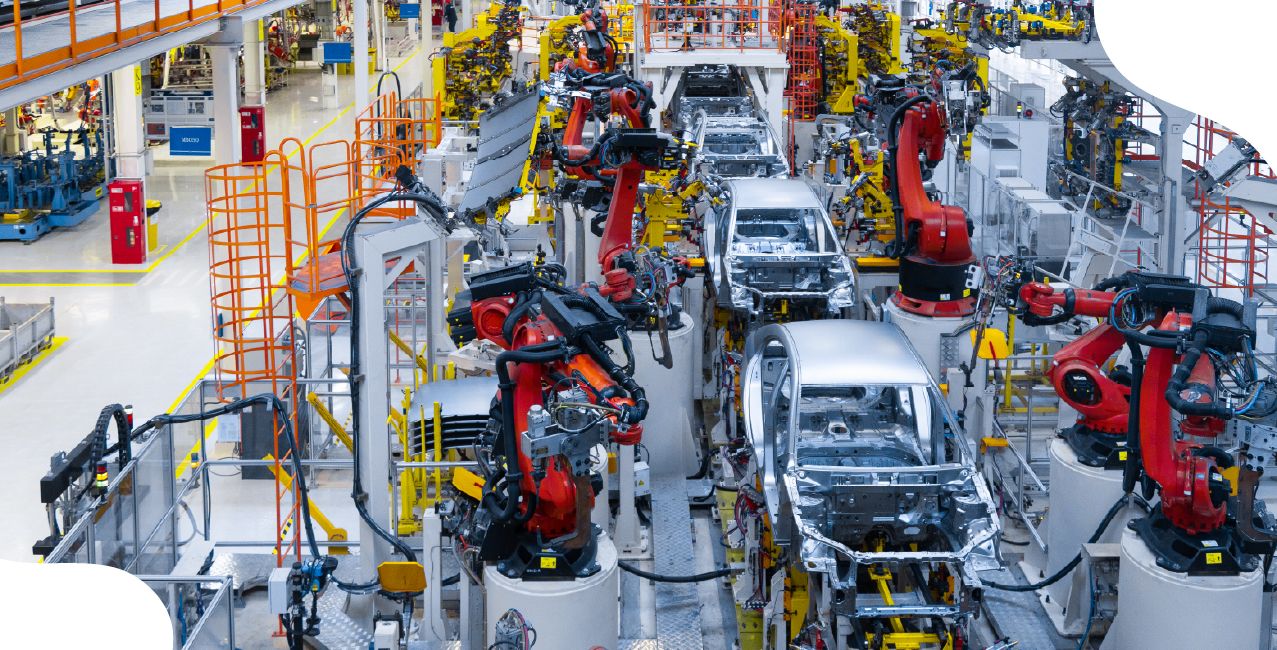
Author
LoansJagat Team
Read Time
6 Min
25 Sep 2025
GST on Automobiles – Updated Rates, Cess & HSN Code Guide
Key Takeaways:
- GST on an automobile ranges from 5% (EVs) to 50% (SUVs with cess). Always check before you buy.
- Only business/commercial buyers can claim ITC, and personal buyers cannot claim tax credit.
- Services like insurance and repairs attract 18–28% GST, which adds to the total cost of ownership.
- Concessions exist for EVs, disabled-friendly vehicles, and public transport; use them to save money.
Bonus Point: Under GST, ambulances are taxed at just 12%, but luxury sports cars can attract a total tax of 50%.
GST on automobiles is the tax charged on vehicles under the GST law, including extra cess and credit conditions for businesses.
Let’s understand it with the help of an example:
Let’s say Siddharth, a Pune-based businessman, planned to buy a premium SUV priced at ₹15,00,000. At the car showroom, the dealer informed him that the GST rate was 28%, plus a 15% compensation cess due to the vehicle's engine size and features. This added ₹4,20,000 as GST and ₹2,25,000 as cess, making the total tax ₹6,45,000.
So, his final price came to ₹21,45,000. If Siddharth had considered an electric vehicle instead, he would’ve paid only 5% GST, just ₹75,000. This shows how GST on an automobile can affect your purchase cost significantly.
Let’s now explore what GST on an automobile means and how different vehicles are taxed under the current GST structure.
Understanding GST on an automobile is important for both personal buyers and businesses. The Goods and Services Tax replaced many earlier taxes like excise duty, VAT, and road tax with a single rate.
Before we go deeper, let’s look at the major points that define GST on vehicles.
Read More - GST on Steel – Tax Rates, HSN Codes & Supply Chain Impact
GST on an automobile was introduced to simplify taxation and improve transparency.
The automobile sector in India underwent a major transformation with the introduction of GST in 2017.
- Before 2017, buying a car meant paying excise, VAT, octroi, and many other taxes.
- Following the implementation of GST, the same tax is applied uniformly across India, simplifying vehicle pricing.
This reform aimed to make vehicle taxation clearer and more transparent for both buyers and sellers.
Now, an extra cess is added for certain vehicle types.
In addition to GST, a compensation cess is levied on specific types of vehicles.
- This includes large SUVs, luxury sedans, and vehicles with an engine capacity exceeding a specific threshold.
- The cess collected is used to compensate states for GST-related losses.
This cess is mainly applied to higher-end or fuel-intensive vehicles to manage revenue and promote environmental responsibility.
The fintech sector also benefits from unified tax rates.
The GST system doesn’t just help vehicle buyers it also impacts related sectors like fintech.
- Vehicle loan platforms and auto insurance services can now price their products better due to predictable tax rules.
- This helps businesses plan their EMI schemes, insurance premiums, and finance approvals.
Unified taxation allows fintech platforms to streamline their offerings without worrying about state-wise tax differences.
So, GST on an automobile not only affects the price but also the total cost of ownership.
GST applies not only to vehicle purchases but also to related services and parts.
- Even services like servicing, insurance, and accessories are taxed under GST.
This ensures tax transparency across the automobile ecosystem but may increase maintenance and ownership costs slightly.
GST Rates on Different Types of Automobiles:
Now, let’s understand how much GST on an automobile is charged on different vehicle types. This varies based on engine size, length, fuel type, and whether the vehicle is electric or not.
The table below simply explains this:
Different vehicles attract different GST and cess rates.
This is done to promote fuel efficiency and discourage pollution-heavy cars.
GST on an automobile in 2025
The GST rate on automobiles in 2025 varies depending on the vehicle type, engine capacity, and environmental impact. The table below shows the applicable GST, cess, and total tax percentage for different categories of vehicles, along with popular example models.
As shown above, luxury vehicles and SUVs attract the highest tax burden due to additional cess, while electric vehicles continue to benefit from reduced GST, promoting cleaner mobility solutions in India.
The GST rate increases with engine power and car size.
- Smaller vehicles and EVs enjoy lower GST to make them affordable.
- Bigger vehicles like SUVs are taxed more to reduce fuel usage and pollution.
This makes electric vehicles more attractive in the long run.
- EVs are cheaper on tax and maintenance.
- Many fintech apps now show savings based on lower GST on EVs.
Also Read - What is Industry: Definition, Types & Role in Economic Development
GST on an Automobile Price Impact:
The GST on an automobile affects not just the tax, but also the total on-road price a buyer pays. It also changes how affordable or expensive vehicles seem to regular customers and businesses.
GST has increased prices for some vehicles and reduced them for others.
- Vehicles that earlier had multiple taxes now have one GST, making tax calculations easier.
- However, the inclusion of cess on luxury vehicles raises the final cost.
Let’s understand it with the help of an example.
Let’s say Rajeev from Delhi wanted to choose between a two-wheeler and a compact sedan. The bike was priced at ₹80,000 and attracted 12% GST, while the car was priced at ₹10,00,000 and attracted 43% GST (including cess). His bike cost went up by ₹9,600 (₹89,600 total), while the car price increased by ₹4,30,000 (₹14,30,000 total). This price difference made him rethink his budget.
The table below shows how GST on an automobile has changed vehicle prices.
GST vs Pre-GST Price Comparison
The GST system benefits smaller, fuel-efficient cars and electric vehicles.
- These vehicles are taxed less, making them affordable.
- Bigger cars remain costly due to high cess.
So, your total vehicle budget must include GST and cess.
- This helps you plan better and avoid last-minute surprises at the showroom.
Input Tax Credit (ITC) Rules on Automobiles
GST on an automobile becomes even more important for business owners due to the option of claiming Input Tax Credit (ITC). ITC allows businesses to recover the GST paid on vehicles, but only under specific conditions.
Let’s understand how this works.
Input Tax Credit helps reduce your tax burden if the vehicle is used for business.
- You pay GST while buying the vehicle.
- If you qualify, you can deduct that amount from your GST payable on sales or services.
But not everyone can claim ITC.
- Personal car buyers are not eligible.
- Only specific business types and registered GST entities can claim it.
Let’s understand it with the help of an example:
Let’s say Suresh runs a transport company in Nagpur. He bought 5 new delivery vans for ₹10,00,000 each. Each van attracted 12% GST, or ₹1,20,000. Since his business is registered under GST, and the vehicles are used solely for goods transport, Suresh can claim back ₹6,00,000 as ITC.
This reduces his overall tax burden. However, his personal car, used for family purposes, is not eligible for ITC.
The table below shows which types of buyers are eligible for ITC:
Who Can Claim Input Tax Credit on Automobile Purchases?
Claiming ITC is allowed only for registered businesses with proper GST bills.
- You must maintain proper tax invoices and vehicle usage proof.
- Fintech platforms often help businesses track ITC eligibility.
So, if you're a business buying vehicles, check the ITC rules first.
- It can save you lakhs of rupees in tax.
Conclusion:
Understanding GST on an automobile is key to knowing the true cost of owning a vehicle in India. From scooters to SUVs, GST and cess can significantly raise prices. Knowing input tax credit rules, service-wise GST, and exemptions helps buyers and transport companies make informed decisions, save money, and plan for long-term ownership and changing tax rates.
FAQs:
1. On which cars is GST reduced in India?
GST is reduced to 18% on small petrol, diesel, and hybrid cars under 4 metres with engine capacity below 1,200cc (petrol) or 1,500cc (diesel).
2. Is GST applicable to used vehicles?
Yes, GST is applicable, but often at a reduced rate if sold by a registered dealer.
3. Which car has the least tax in India?
Electric vehicles have the lowest GST, followed by small petrol cars under 1.2L engine capacity and less than 4 metres in length.
4. What is the most tax-efficient car in India?
Electric vehicles are the most tax-efficient with just 5% GST and low running costs, followed by low-emission hybrids and small petrol cars.
5. Why does my SUV have more tax than a hatchback?
SUVs attract extra cess because of their size, engine capacity, and luxury category.
About the Author

LoansJagat Team
‘Simplify Finance for Everyone.’ This is the common goal of our team, as we try to explain any topic with relatable examples. From personal to business finance, managing EMIs to becoming debt-free, we do extensive research on each and every parameter, so you don’t have to. Scroll up and have a look at what 15+ years of experience in the BFSI sector looks like.

Quick Apply Loan
Subscribe Now


